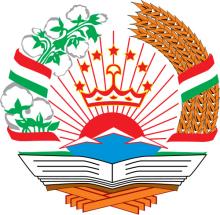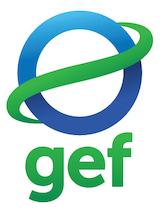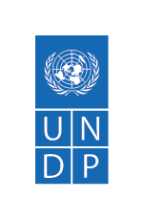Community Learning & Capacity Building for Global Environmental Management & Poverty Reduction in Tajikistan
Introduction
The project aims to expand Tajikistan’s capacity to generate global environmental benefits through educating and involving diverse stakeholders in addressing Rio Convention themes at national and local levels. The project will build capacity to use two key environmental management tools to implement the Rio Conventions and to reduce poverty. The first is “environmental learning” (EL) which, according to the Tajik Government’s approach, includes both formal environmental education (EE) in schools and informal environmental learning (EL) for all sectors of society. The second is “stakeholder involvement” (SI) which includes public awareness, consultation and participation.
The project strategy has three components: (1) Enhance the enabling environment for using EE/EL and SI through modifying legal, policy, institutional and strategic frameworks; (2) Improve organisational and individual capacity to implement EE/EL and SI programmes and to integrate environmental learning and involvement activities into other programmes and projects; and (3) Enhance local capacity to link local and global issues, and natural resources management (NRM) and poverty reduction, through action projects based on a model and techniques for “Community Environmental Learning” (CEL).



Project details
Tajikistan is a landlocked country in South-East Central Asia, with mountain systems covering about 93% of the land area and almost half the country above 3,000 m. Because of the varied topography and climatic regimes, the country has diverse natural environments and rich biodiversity, including 25 types of terrestrial and inland waters ecosystems and many unique local biotopes.
The country has a population of 6,438,000, with 40% under the age of 14 and over 70% of the population still rural. After the collapse of the Soviet Union and independence in 1991, the country experienced civil war through to 1996. The war, economic contraction, and the loss of social services led to a dramatic deterioration in living conditions, especially in rural areas. The country began recovery after a peace agreement in 1998 and has achieved considerable economic success. GDP growth has been steady over the last seven years, with an average rate of 10 percent for the past four years. Despite this, the country remains among the poorest and most fragile of the CIS1 countries.
Tajikistan was one of the poorest of the Soviet republics and is still considered “low-income”, with widespread poverty, especially in rural areas. It ranks 103rd among 174 states, using the UN Human Development Index. Gross national income per person is US$280, the lowest in Eastern Europe and the CIS and one of the lowest globally. An increase in natural disasters, often exacerbated by human factors (deforestation, poor land management, building on slopes), has further impaired the country's infrastructure and productive capacity. Local people are highly dependent on natural resources for food, fuel and construction, imposing increasing pressure on forests, land, water and biological diversity for their livelihoods.
The project strategy is three-fold:
- Improve the enabling environment to support the use of environmental learning and stakeholder involvement as tools to improve environmental and natural resource management: Any well-designed capacity development should aim to strengthen the “weak links” in this system that are creating barriers to a fully functioning system. This intervention involves strengthening the national legislative, policy, institutional and strategic frameworks to promote the use of EE/EL and SI as tools for convention implementation, the linking of global and local issues, and the integration of natural resource management and poverty issues. This will enable government, academia and non- government organisations to more effectively implement the numerous existing commitments and programmes on EE/EL and SI, which have been only weakly operationalised until now.
- Enhance the capacity of diverse government and non-government organisations to integrate state- of-the-art environmental learning and involvement programs into environmental and natural resource initiatives: Tajikistan is still in a transition period when the heavily subsidized Soviet system of education is no longer functioning and the new system is still being developed. This strategy involves diversifying the delivery mechanisms for EE/EL and SI in different sectors and involving multiple stakeholders in this delivery. This intervention will strengthen the institutional and individual capacity of national and local government agencies, academia, the media and civil society (NGOs, CBOs, local communities) to design and deliver EE/EL and SI. ENGOs, with their commitment and experience in the EE/EL field, will play an important role, while CBOs, including Jamoat Resource Centers, youth and women’s organizations, with their local knowledge and networks, will also be involved. There will be a small component to build capacity of secondary school teachers to implement EE/EL programmes which will complement the Community Environmental Learning activities under Outcome 3. Global- local linkages will be integrated into all activities in order to broaden the base of support for Rio Convention implementation in the Tajik context.
- Enhance the capacity of local communities to improve environmental and natural resource management practices as part of sustainable development, for both global and local benefits: In recent years, there has been considerable activity in the Tajikistan related to the Rio Convention themes of biodiversity conservation, land degradation and climate change, including public education and involvement components. However, much of this has taken place in the capital of Dushanbe, involved the central government bodies and city-based NGOs. This strategy will bring convention implementation activities to the local community level, which is crucial in a country where 70% of the people live in rural areas, most in very small settlements. Institutional and policy arrangements will be reformed, as needed to enable greater community involvement in environmental and natural resources management. Materials and training/learning activities community-based natural resource management will be designed based on a model of “Community Environmental Learning”.
The project strategy will also draw on lessons learned in a review of the effectiveness of capacity-building activities done under the UNFCC (Note by the Secretariat, UNFCC Subsidiary Body for Implementation, 2004. FCCC/SBI/2004/9), as follows:
- Long-term learning by doing approaches that favour the development of partnership and networks and that integrate capacity building into wider sustainable development efforts have more chances of success.
- Ensuring national ownership and leadership as well as multi-stakeholder consultations at all stages of implementation creates a favourable environment for achieving results.
- The practice of adaptive management2 and consideration of the dynamic nature of capacity- building considerably increases the likelihood of an initiative achieving its intended results.
During the project preparation it was also identified that there is a need to build capacity in “raising public awareness, incorporating climate change into national education systems” and the need to build the capacity of a wide range of stakeholders from government, NGOs, private sector, academia and local communities.
- Community
- Country Office
- National Governments
Through improved identification of national circumstances, government agencies and other actors will increase their abilities to insulate at risk urban and rural populations from the adverse effects of climate change.
- Government of Tajikistan
- Global Environment Facility (GEF)
- United Nations Development Programme (UNDP)
News
Key results and output
Goal: To expand Tajikistan’s capacity to generate global environmental benefits through educating and involving diverse national and local stakeholders in addressing Rio Convention themes
Objective: To strengthen capacity to use environmental learning5 and stakeholder involvement as tools to address natural resource management issues as part of poverty reduction
- Outcome 1: Enhanced legal, policy, institutional and strategic frameworks to strengthen environmental education/learning and stakeholder involvement as natural resource management tools
- Output 1.1: The State Programme for Environmental Education and Learning 2000-2010 in all sectors is updated and extended, integrating Rio Conventions themes, and an Implementation and Evaluation Plan is prepared
- Output 1.2: Legal, policy, institutional and strategic frameworks are established to implement the State Programmes on (1) Environmental Education and Learning and (2) Ecology
- Output 1.3: Legal, policy, institutional and strategic frameworks are established to implement commitments to stakeholder involvement and access to information, as outlined in the Rio and Aarhus Conventions
- Outcome 2: Improved capacity of government and civil society to integrate environmental learning and stakeholder involvement into programmes and projects
- Output 2.1: Enhanced technical and managerial capacity of key Ministries and State Committees7 to implement the State Programmes on (1) Environmental Education and Learning and (2) Ecology and to conduct stakeholder involvement
- Output 2.2: Models, guidelines, codes of good practice and checklists for environmental learning and stakeholder involvement are developed and disseminated through train-the-trainer, training and peer learning programmes
- Output 2.3: Training and materials on environmental learning and stakeholder involvement are integrated into civil service training and refresher courses
- Output 2.4: Training and materials on environmental education are integrated into teacher training and refresher courses for secondary school teachers
- Outcome 3: Enhanced capacity of local government and community organisations to use community environmental learning and involvement as tools for natural resource management and poverty reduction
- Output 3.1: Enhanced institutional arrangements and strategies for community environmental learning and involvement in natural resource management at the Jamoat (sub-district) level
- Output 3.2: Training/learning activities on community environmental learning and involvement are delivered to local government and community organisations, with follow-up support
- Output 3.3: A Community Environmental Learning Action Kit8, with thematic modules linking global and local issues, is designed, tested in six pilot sub-districts (Jamoats) and disseminated to other communities
- Output 3.4: The network of Jamoat Resource and Advocacy Centres integrates community environmental learning and involvement into on-going community capacity-building, offering resources, training, peer learning and networking with partner organizations
- Outcome 4: Effective, efficient, and adaptive project management, monitoring and evaluation
- Output 4.1: The project office is established and staff are hired
- Output 4.2: Project management processes are established and progress, evaluation and monitoring reports are produced according to GEF and UNDP standards
- Output 4.3: Lessons learned from the project are documented and disseminated within the country and region (Central Asia and CEE)
Reports & publications
Videos & multimedia
Monitoring & evaluation
Project Start:
Project Inception Workshop: will be held within the first 2 months of project start with those with assigned roles in the project organization structure, UNDP country office and where appropriate/feasible regional technical policy and programme advisors as well as other stakeholders. The Inception Workshop is crucial to building ownership for the project results and to plan the first year annual work plan.
Daily:
Day to day monitoring of implementation progress: will be the responsibility of the Project Manager, based on the project's Annual Work Plan and its indicators, with overall guidance from the Project Director. The Project Team will inform the UNDP-CO of any delays or difficulties faced during implementation so that the appropriate support or corrective measures can be adopted in a timely and remedial fashion.
Quarterly:
Project Progress Reports (PPR): quarterly reports will be assembled based on the information recorded and monitored in the UNDP Enhanced Results Based Management Platform. Risk analysis will be logged and regularly updated in ATLAS.
Annually:
Annual Project Review/Project Implementation Reports (APR/PIR): This key report is prepared to monitor progress made since project start and in particular for the previous reporting period (30 June to 1 July). The APR/PIR combines both UNDP and GEF reporting requirements.
Periodic Monitoring through Site Visits:
UNDP CO and the UNDP RCU will conduct visits to project sites based on the agreed schedule in the project's Inception Report/Annual Work Plan to assess first hand project progress. Other members of the Project Board may also join these visits. A Field Visit Report/BTOR will be prepared by the CO and UNDP RCU and will be circulated no less than one month after the visit to the project team and Project Board members.
Mid-Term of Project Cycle:
Mid-Term Evaluation: will determine progress being made toward the achievement of outcomes and will identify course correction if needed. It will focus on the effectiveness, efficiency and timeliness of project implementation; will highlight issues requiring decisions and actions; and will present initial lessons learned about project design, implementation and management. Findings of this review will be incorporated as recommendations for enhanced implementation during the final half of the project’s term.
End of Project:
Final Evaluation: will take place three months prior to the final Project Board meeting and will be undertaken in accordance with UNDP and GEF guidance. The final evaluation will focus on the delivery of the project’s results as initially planned (and as corrected after the mid-term evaluation, if any such correction took place). The final evaluation will look at impact and sustainability of results, including the contribution to capacity development and the achievement of global environmental benefits/goals. The Terminal Evaluation should also provide recommendations for follow-up activities.
Project Terminal Report: This comprehensive report will summarize the results achieved (objectives, outcomes, outputs), lessons learned, problems met and areas where results may not have been achieved. It will also lie out recommendations for any further steps that may need to be taken to ensure sustainability and replicability of the project’s results.
Learning and Knowledge Sharing:
Results from the project will be disseminated within and beyond the project intervention zone through existing information sharing networks and forums.
The project will identify and participate, as relevant and appropriate, in scientific, policy-based and/or any other networks, which may be of benefit to project implementation though lessons learned. The project will identify, analyze, and share lessons learned that might be beneficial in the design and implementation of similar future projects.
Finally, there will be a two-way flow of information between this project and other projects of a similar focus.
Links
Newsfeed
Contacts
- UNDPTom Twining-WardRegional Technical Advisor
- UNDPSukhrob KhoshmukhamedovCountry Officer
- UNDPKiomidin DavlatovProject Coordinator
